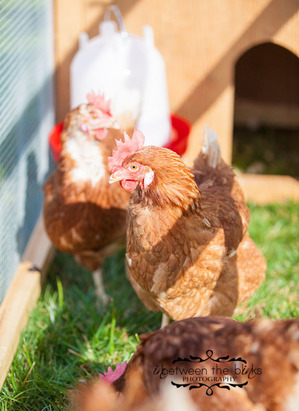Hen rescues
Our guest blogger has requested that we withhold their name to protect their privacy.
When I was 11 or 12 years old I was hired to clean cages in a poultry factory farm in rural Michigan. The images, the smells and the cruelty these hens suffered never left me. I knew there was a better way to buy and/or raise food.
I decided to start owning backyard chickens about three years ago after we settled into our new house. I saw a couple of my friends each build coops, but it was my first Tour D’Coop that left me completely enamored. This was one giant step toward knowing where your food comes from, and really gave me the motivation to continue pursuit of my own coop. My ultimate reasoning behind raising my own laying hens was because it was the only way I could guarantee the eggs we ate were raised humanely. For it to turn in into such a fun hobby makes it that much more rewarding.
I’ve heard many times how poultry may be the most abused animals in the world. From my experiences I can see where this statement could be true. We’ve all seen photos of “battery hens” (egg production hens) crammed in cages, row after row and aisle after aisle. Battery hens live their entire lives like this. When they are tiny chicks, farms will burn the tips of their beaks off in a device that looks like a giant pencil sharpener. The beaks are clipped off so they can’t peck each other within the tiny confines of the wire cages. Even the beaks of cage-free hens will be clipped to avoid pecking in crammed quarters. Production hens will grow up and never see sun light, never chase bugs, or dig in the dirt. They sit in feces-filled quarters side by side, day after day. The labels on egg cartons can be very deceiving. It is all sneaky marketing to make you think your money is going toward humane farm practices. To learn more about marketing and egg cartons labels check out this handy link.
 Now that I have a backyard flock of my own, I researched how to give a second chance to some of the hens living in factory farms. I learned that most egg production facilities dispose of their “spent” hens when they are only two years old and/or decreased laying production by as little as 20%. So the majority of hens are either euthanized by gas, disposed of in landfills, or sold to large companies for either chicken soup or by-products in dog food. The thought of a hen being deemed “worthless” when she is “only” laying at 80% capacity makes me roll my eyes. What a waste! Keep in mind too, these aren’t the average laying hens, these are production breeds. So when we say they’re laying at 80% that means at least one egg a day, sometimes two. These hens still have many good years of laying ahead of them. and deserve to know what life is like outside of an ammonia-filled production barn.
Now that I have a backyard flock of my own, I researched how to give a second chance to some of the hens living in factory farms. I learned that most egg production facilities dispose of their “spent” hens when they are only two years old and/or decreased laying production by as little as 20%. So the majority of hens are either euthanized by gas, disposed of in landfills, or sold to large companies for either chicken soup or by-products in dog food. The thought of a hen being deemed “worthless” when she is “only” laying at 80% capacity makes me roll my eyes. What a waste! Keep in mind too, these aren’t the average laying hens, these are production breeds. So when we say they’re laying at 80% that means at least one egg a day, sometimes two. These hens still have many good years of laying ahead of them. and deserve to know what life is like outside of an ammonia-filled production barn.
Many people chuckle when they hear the idea of giving a second chance to a production hen. “There are billions chickens in these large factory farms. what does one or two hens matter?” I am reminded of the starfish parable:
An old man had a habit of early morning walks on the beach. One day, after a storm, he saw a human figure in the distance. As he came closer he saw that it was a man and he was not dancing but was reaching down to the sand, picking up a starfish and very gently throwing them into the ocean.
“Young man,” he asked, “Why are you throwing starfish into the ocean?”
“The sun is up, and the tide is going out, and if I do not throw them in they will die,” said the young man.
“But do you not realize that there are miles and miles of beach and starfish all along it? You cannot possibly make a difference.”
The young man listened politely, paused and then bent down, picked up another starfish and threw it into the sea, past the breaking waves, saying, “It made a difference for that one.”
So far we have saved a handful of hens, but there are always more. These photos are of the hens the first time they set their feet on grass. You can see they’re missing feathers, their toe nails are overgrown, and their beaks are cut short. The ones we’ve rescued so far have become friendly, comical, and outgoing backyard pets. They’ve gone from being numbered to having names!
The passion for humanely raised food started about 20 years ago while working that farm in rural Michigan. Those memories are driving me to make a difference today, one hen at a time. If you have room in your coop to give a second chance to one or two production hens, please email hen.rescue@gmail.com
